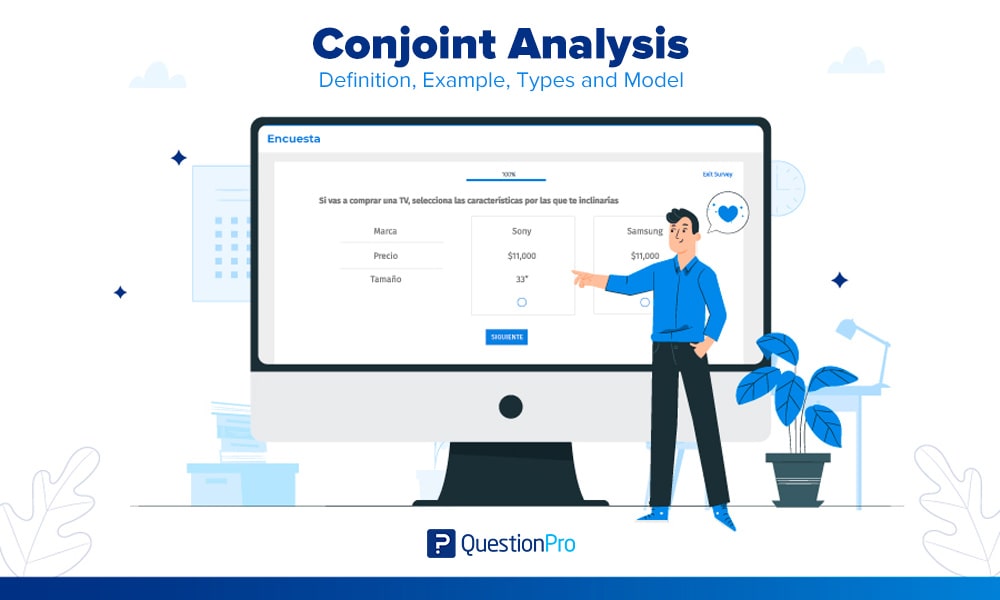You might have already heard of the concept of choice-based conjoint analysis, or Partworth utilities, and the general purpose of preliminary data collection. But how does this tool work? First, let’s take a look at some of the most common examples. Also, learn how to apply the tools of choice-based conjoint analysis properly. Finally, this article covers the application of conjoint analysis in marketing research and some of the most common types of conjoint analysis: choice-based, Partworth utilities, and more.
Choice-based conjoint analysis
A choice-based conjoint analysis in marketing research can help identify consumers’ preferred products. The technique examines consumer reactions to a particular product, which is key to determining which products to develop. The choice-based conjoint approach helps you answer questions such as: “How important is a certain feature of a product to you?”. In addition to examining the impact of product attributes, conjoint analysis can also answer questions about “what if” scenarios.
Using this technique can help marketers simulate the real market for their products. Compared to earlier types of conjoint analysis, respondents can evaluate multiple attributes at once, allowing them to investigate the market’s acceptance, price sensitivity, and cannibalization. In addition, it allows for more realistic estimates of individual attributes. Several advantages of choice-based conjoint analysis make it the most widely used conjoint technique. However, some limitations and guidelines still apply to this technique.
Partworth utilities
When applying conjoint analysis in marketing research, it is crucial to use Part worth utilities or the relative importance of individual attribute levels. Partworth utilities can be calculated using the CBC data or Latent Class. Partworth utilities are ratios that reflect the relative importance of a particular attribute, such as battery life, operating speed, or camera quality. The data generated by the conjoint solution can be used to create deliverables and outputs and are the building blocks of the summary metrics that accompany the analysis.
This type of comparison enables the study team to compare the relative importance of attributes relevant to the product’s success. The percentages of individual features are added and calculated to determine the quality’s total percent. The higher the rate, the more critical the attribute is. This type of analysis can be automated using software platforms. The Partworth utility table also includes individual-level HB coefficients that measure the importance of a particular attribute.
Cannibalization
Understanding the role of conjoint analysis and cannibalization is crucial for product optimization, which can be challenging when a new product is introduced. The two methods can help to identify which attributes combine to influence consumer decisions while CannibalisationCannibalisation occurs when a new competitor launches a competing product. In marketing research, choice-based conjoint is often the preferred method as it accounts for the competitive context. You can use it to identify which attribute combinations influence consumer choices and their implicit valuations of the individual attributes. You can also use it to understand brand-level pricing perceptions and price elasticity.
Consumers often purchase many different products from the same brand. Therefore, they are not likely to substitute a lower-priced item with a similar price, which may result in cannibalization. A new fighting brand, for example, may face more cannibalization if consumed privately rather than publicly. Conversely, consumers may be more loyal to a brand that offers the most product variety.
Preliminary data collection
Before analyzing consumer preference for a specific product or service, it is necessary to collect preliminary data. This data is vital to understanding the characteristics of consumers’ decision-making processes. Associative memory processes in long-term memory often generate competing hypotheses that occupy the limited capacity of the working-memory system. As such, the B/W method and choice-based conjoint produce part-worth utilities. However, preliminary results from these methods are mixed, and more research is needed to validate their use in marketing research.
Once the preliminary data are collected, you can use the data for conducting a conjoint study. During the survey, you can ask respondents which product they prefer and then analyze their choices based on their characteristics. Doing this will determine which attributes consumers value most and would be willing to pay more for. In addition, you can use the data to learn more about your competition’s products and services.





